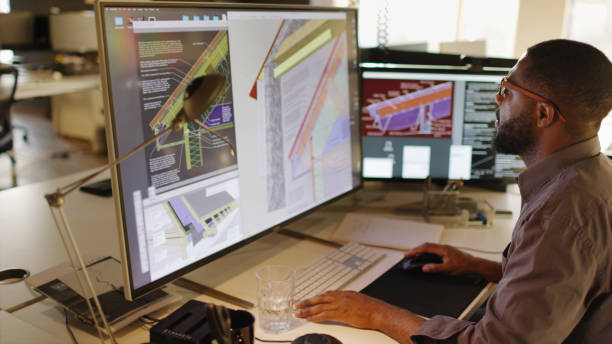In the realm of modern construction and engineering, the precision and clarity of electrical drawings are paramount. These blueprints serve as the guiding light for electricians, technicians, and engineers to bring power and data networks to life within buildings and structures. In this blog, we delve into the intricacies of crafting electrical drawings for small power and data systems using Computer-Aided Design (CAD) software. **Understanding the Essentials** Before diving into CAD software, it’s crucial to understand the fundamentals of electrical drawings. Small power and data drawings typically include details about power outlets, switches, lighting fixtures, and data networking components such as Ethernet ports and data sockets. These drawings not only convey the layout of electrical elements but also provide vital information regarding circuitry, wiring, and safety considerations.
**Leveraging CAD for Precision and Efficiency** CAD software revolutionizes the creation of electrical drawings by offering unparalleled precision, flexibility, and efficiency. With CAD tools, designers can easily manipulate symbols, lines, and annotations to create comprehensive electrical schematics. CAD libraries provide a vast array of pre-designed electrical symbols, streamlining the drawing process and ensuring consistency across projects.
**Creating a Layout** The first step in crafting electrical drawings is to create a layout that accurately reflects the physical space and placement of electrical components. CAD software allows designers to import architectural floor plans and integrate electrical elements seamlessly. By layering electrical components onto the floor plan, designers can ensure optimal placement for power outlets, switches, and data ports while adhering to building codes and safety standards.
**Symbol Selection and Customization** CAD libraries offer a wide selection of standardized electrical symbols, ranging from power outlets to data jacks. Designers can easily drag and drop these symbols onto the drawing canvas, arranging them according to the layout requirements. Additionally, CAD software allows for the customization of symbols, enabling designers to modify attributes such as size, color, and line weight to enhance clarity and readability.
**Wiring and Circuitry** One of the most critical aspects of electrical drawings is conveying the wiring and circuitry connections between components. CAD software simplifies this process by providing tools for drawing wires, cables, and conduits with precision. Designers can create logical connections between electrical elements, specifying circuit paths and identifying power sources and distribution points.
**Annotation and Documentation** Accurate annotation and documentation are essential for conveying crucial information within electrical drawings. CAD software facilitates the addition of text labels, dimension lines, and callouts to provide context and clarity. Designers can annotate wiring diagrams with notes detailing wire gauges, circuit capacities, and voltage ratings, ensuring that electricians have all the information they need for installation and maintenance.
**Collaboration and Revision Control** CAD software enables seamless collaboration among design teams, contractors, and stakeholders throughout the project lifecycle. Design files can be easily shared and reviewed, allowing for real-time feedback and iteration. Version control features ensure that revisions are tracked and documented, minimizing errors and discrepancies during the design process.
**Conclusion** Electrical drawings for small power and data systems play a crucial role in the construction and maintenance of buildings. By harnessing the power of CAD software, designers can create detailed and accurate blueprints that guide the implementation of electrical infrastructure with precision and efficiency. From layout design to annotation and collaboration, CAD empowers designers to bring their vision to life while adhering to industry standards and best practices. Mastering the art of electrical drawings in CAD opens up a world of possibilities for creating safe, reliable, and efficient electrical systems for the modern built environment.


